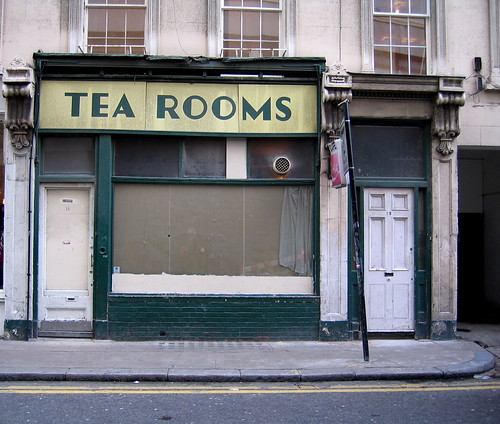Tuesday, March 22, 2005
tea rooms
A tea-shop is a delightful place. It is the milestone that marks the end of a day's work.
In the provinces, and particularly in the north and in Scotland, where men take tea with passionate sincerity, frequently starting with sardines and ending with apple tart, the tea-shop occupies an appropriately massive position in daily life. London's tea-shops are, however, talk-shops, refuges from a day's shopping, trysting-places after a terrible eight hours' separation.
O, the eyes that meet over a muffin every afternoon in London; the hands that thrill to a casual touch beneath the crumpet plate. . .
London's tea-shops are of many kinds, from the standardized shop to the good pull-up for millionaires constructed on the Paris plan, where slim Gruyere sandwiches hide in paper coats, and cakes taste of Benedictine, and bills have a queer habit of working out at fifteen shillings.
Then, of course, there is the cosy type of tea-shop run on amateur lines where genteel young women who do not seem to have forgotten William Morris bend wistfully over the meringues in brown or sage green crepe de Chine gowns and an air shattered romance. -- Women and Tea from The Heart of London by H.V. Morton, Methuen, 1922.
Where do hands not thrill to a casual touch beneath the crumpet plate. The memory of the memory of the tea shop is fast fading in London. You'll get the same tea-bag in six ounces of tepid water you get anywhere else in the world, and you'll like it.







